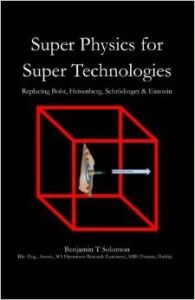Apr 21, 2015
Noether’s Theorem + Equivalence Principle = c-global (part II)
Posted by Otto E. Rössler in categories: existential risks, particle physics
The conserved angular momentum L obeys a simple formula for a constant vertical (or else horizontal) rotation axis of the wheel:
L = ω m r^2
Since this expression is hard to remember by heart, the word “L’hombre” can help even though it is not high-Spanish. ω is the rotation rate, m the mass and r the radius of Noether’s frictionlessly rotating bicycle wheel.
If ω is halved (as on the surface of a neutron star), what about m and r , the other two components of the conserved L ?
Continue reading “Noether’s Theorem + Equivalence Principle = c-global (part II)” »








